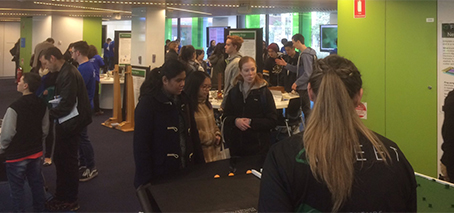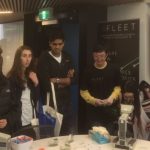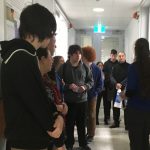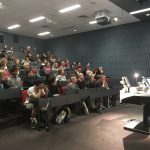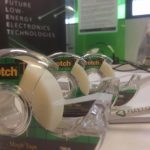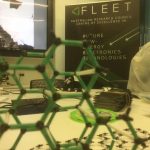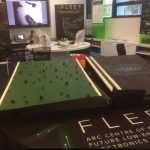Monash University’s recent open day provided a great opportunity to explain FLEET to a large audience.
The FLEET zone in the School of Physics and Astronomy area allowed for hands-on demonstrations, while lab tours provided a closer look at the research and FLEET director Michael Fuhrer presented a talk on the big picture challenges of energy use in global computing.
Prospective students (and quite a few parents) studied slices of graphene and molybdenum disulphide under microscope, or used Scotch tape to separate out their own samples, while Yuefeng Yin and Chutian Wang explained how such atomically-thin materials are used within Nikhil Medhekar’s engineering group.
Visitors also enjoyed the ‘pinball machines’: Large-scale models constructed by FLEET outreach coordinator Dianne Ruka that demonstrated how electrons (ping-pong balls) are scattered by material imperfections in a traditional transistor, but travel down a one-dimensional, dissipationless edge-path in topological transistors.
Around 300 students and parents toured the Physics rooms, with a fair proportion visiting the FLEET area. Another 75 visitors got a closer look at FLEET’s Monash labs, touring the Bose Einstein condensate labs with Kris Helmerson, and atomically-thin material growth labs with James Collins and Agustin Schiffrin.
Close to 90 also attended a lecture by FLEET director Michael Fuhrer, who described the big picture behind FLEET, and some of the work being done with topological materials.
As well as introducing key concepts, it was a valuable opportunity for FLEET members to practice telling the story of FLEET to an audience mostly not-scientifically trained, though enthusiastic about physics.

